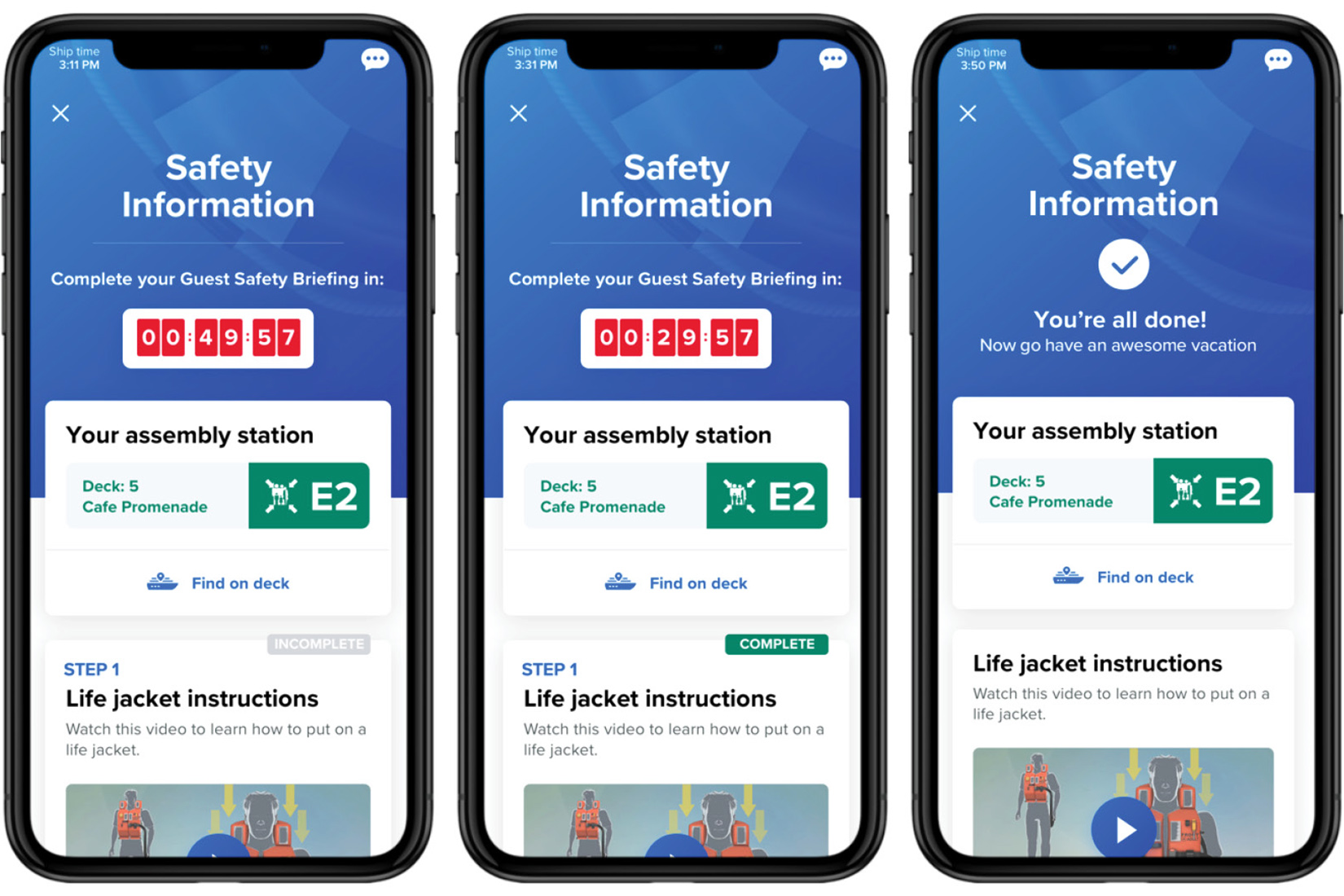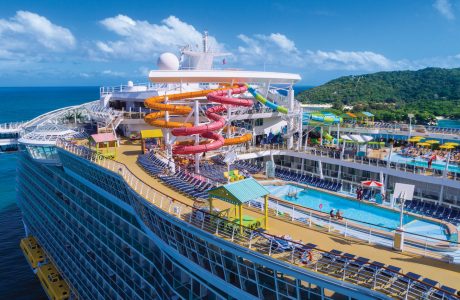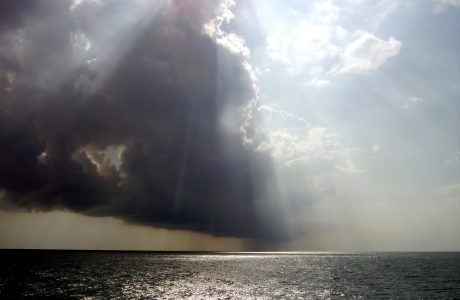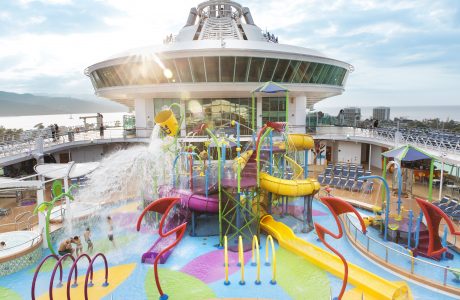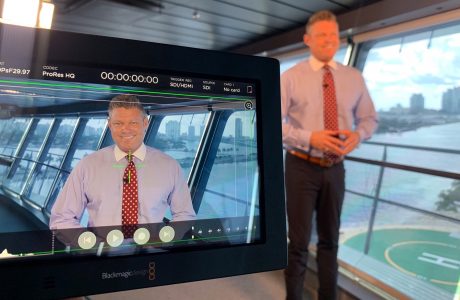The muster (or safety) drill—a mandatory practice at the beginning of each cruise designed to show guests where they should go in the unlikely event of an emergency, how to put on a life jacket and other safety measures. It’s incredibly important, but it’s also the least favorite part of the cruise for guests since it requires pausing your vacation just when it’s getting started.
That’s why Royal Caribbean began to develop a new approach years ago, and today, that’s Muster 2.0™. The new program reinvents the cruise industry’s standard safety drill with a process that is more personal and promotes higher levels of safety. Having worked with international regulators, the U.S. Coast Guard and other maritime and government authorities, the app also meets all safety requirements.
Here’s how it works. Guests can complete the drill on their own time thanks to our new eMuster™ technology, which brings the safety information they need to their mobile device via the Royal Caribbean app and stateroom TV. Then, before the ship departs, every guest just needs to visit their assembly station—a designated check-in location—where our crew can verify they’ve completed the process. No more set time, no more large group assemblies.
Nick Weir, Royal Caribbean’s senior vice president of Entertainment, was instrumental in developing Muster 2.0™. We chatted with him to see how it came to be and what it means for the guest experience:
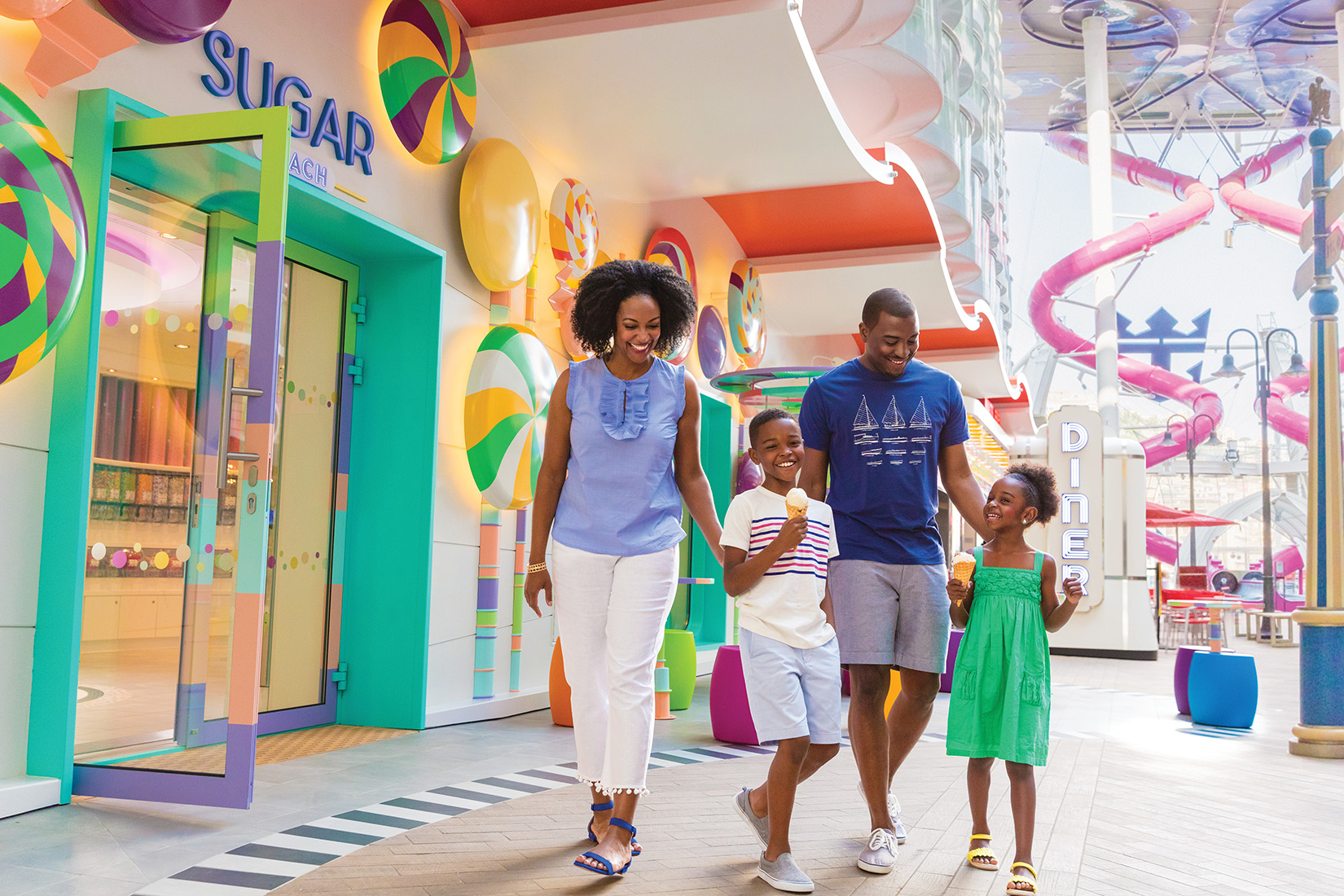
Families will have more time to enjoy their vacation and explore the ship without interruption.
Credit: Royal Caribbean
Q: How and why was Muster 2.0™ developed?
Nick: The safety drill has always put a pause on the cruise experience, and felt like it could be more efficient. When I was a cruise director, I was responsible for the welcome party held on the first day—but also had to make the announcements for the drill. It always brought all the fun to a halt right when things were getting going.
I happened to be outside on one hot, sweaty day during the drill, and I thought why not put it all on a device so it can be done individually and monitored? Technology naturally played a big part—location services on smartphones is essential, and a big team at Royal Caribbean came together to make it happen.
Q: In terms of the guest experience—what are the biggest differences between the old process and Muster 2.0™?
Nick: Muster 2.0 changes the experience entirely. Previously, the safety drill meant having crowds of people going to the same space at the same time. Some may say many are just following others as opposed to actively finding and learning where their assembly station is located.
Also, on the first day, guests are officially on vacation mode. We used to have to drive home all the safety information in a clunky, disruptive way. With this new program, they can complete the process with more flexibility and speed, so they’ll have more time to visit the pool, hit up a bar for cocktails or surf on the FlowRider.
What’s more, now going to your assembly station naturally integrates with exploring the ship—a notion reaffirmed by the more than 95% positive response from guests who participated in our first trials on Symphony of the Seas in January.
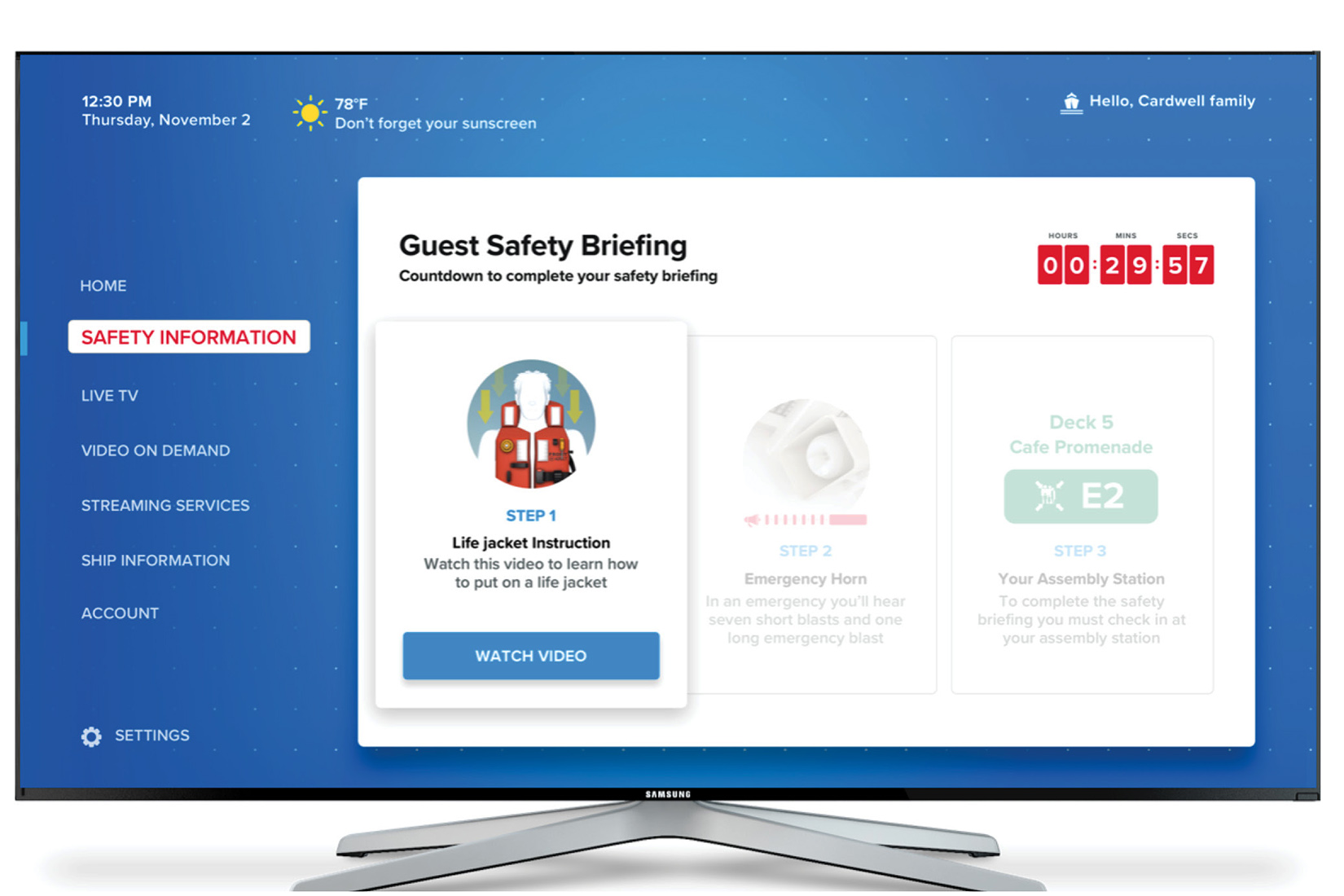
Guests can begin the process on stateroom TVs as well as mobile devices.
Credit: Royal Caribbean
Q: Where can guests complete the process before visiting their assembly station and what happens if someone forgets to?
Nick: The beauty of it is that our guests can access everything they need right from their smartphone or the stateroom TV, and then complete the drill by checking in at their assembly station. If someone hasn’t completed the process, they’ll get a reminder on their device, and if it comes to it, we’ll make reminder announcements. There are no shortcuts when it comes to safety.
Q: Why was the decision made to share this technology across the cruise industry?
Nick: We’re all in this together. This isn’t just big for Royal Caribbean—it’s a major innovation for the cruise industry. When you’ve patented something like this for safety, sharing it is simply the right thing to do. The same thing happened in the car industry with the patent for the three-point seatbelt.
Q: Is the goal to continually enhance Muster 2.0™?
Nick: We’ll continue to modify the process as the technology evolves. Our digital team is always looking for ways to maximize the latest technological innovations to make the vacation experience more seamless for our guests.
Looking forward to your next cruise, where you can try out Muster 2.0? Head here to see where Royal Caribbean can take you.
